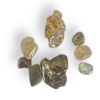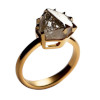Born from the Earth, Destined for Greatness

Origin of our diamonds
We proudly offer products directly sourced from East and West Africa.We proudly offer products directly sourced from East and West Africa.We proudly offer products directly sourced from East and West Africa.We proudly offer products directly sourced from East and West Africa.We proudly offer products directly sourced from East and West Africa.

Uncut Diamonds
Raw, natural diamonds carefully sourced for diamond cutters and jewelry artisans who value authenticity and the potential to craft something truly unique. Whether you are creating bespoke pieces or seeking high-quality materials for your craft, our diamonds provide a solid foundation for exceptional creations.

The Beauty of Imperfection: Raw Diamonds
Rough diamonds are gaining popularity in the jewelry world thanks to their unique, natural look and organic shapes, which are perfect for modern, minimalist styles. They offer a sustainable and often more affordable alternative to cut stones, while their unprocessed state exudes simplicity and authenticity. Many consumers also value the traceable and ethical origins of rough diamonds, making them a conscious choice. Designers embrace the creative freedom these stones offer, and their pristine beauty often symbolizes purity and a deep connection to nature.
Each week, depending on the stone collection, we present our selection to our partners as part of our regular supply of raw stones.
The 4 C criteria as indicated internationally trade:
1. Carat – the weight of the diamond
The carat is the unit of measurement for the weight of a diamond,
Whether natural or synthetic: it corresponds to the dimensions of the stone. for equal quality, the greater the carat, the larger the diamond.
2. Clarity – the purity of the diamond
All diamonds have imperfections. these imperfections are inclusions at the heart of the diamond structure, which appeared during the formation of the stone. these impurities have no influence on the brilliance of the diamond and most are invisible to the naked eye.
3. Color – the color of the diamond
A sign of purity and rarity, the more colorless (white) a diamond is, the more expensive it will be. the international white diamond color scale includes 23 shades, graded from d (perfectly white diamonds) to z (tinted diamonds).
4. Cut – the cut of the diamond
It is the quality of the cut of the diamond that will maximize its brilliance, whether natural or synthetic. indeed, a good cut allows the diamond to reflect the light that penetrates it and, thus, enhance its brilliance. the wrong size will allow light to escape from the side
